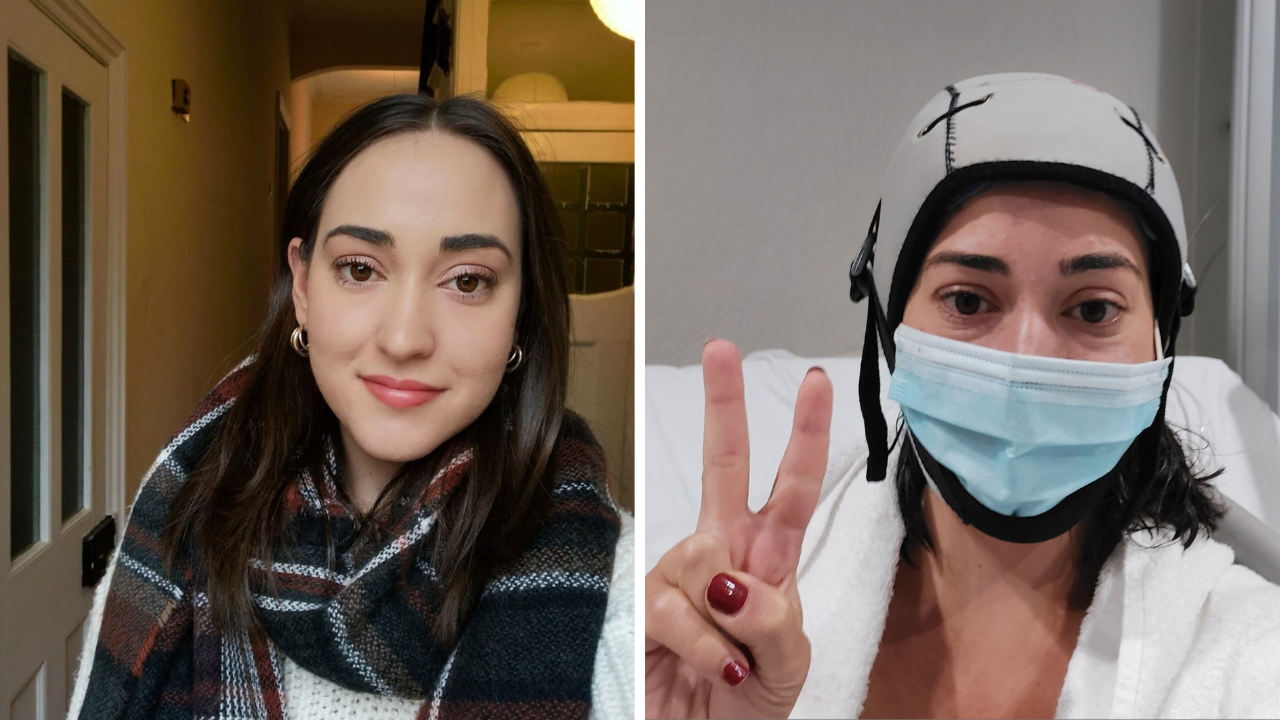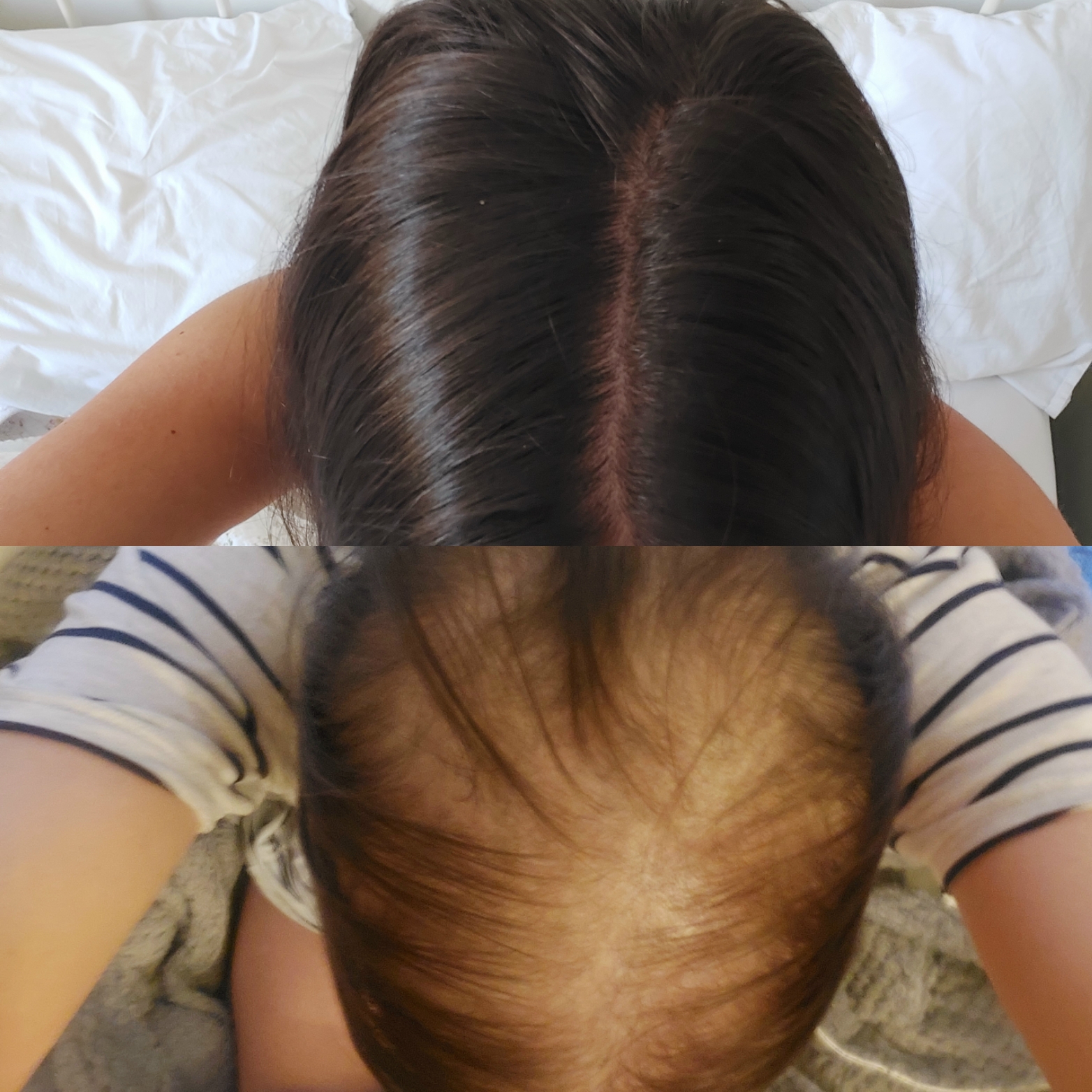Using The Cold Cap - Selin's Experience

A bit about you:
My name is Selin and I'm an online learning editor from London. I was diagnosed with early stage, triple positive breast cancer, in July 2020 at the age of 23, after having a lump checked by my doctor. This wasn't just a shock to me, but to my family and medical team as well. Once the initial panic subsided, I decided to document my journey through treatment on social media. After 12 weeks of treatment, I've finally finished chemotherapy and am getting ready for surgery.
Tell us about your experience using the Cold Cap:
When I was first diagnosed, I went into a state of shock that stopped me from being able to see beyond that point. The doctor was talking about my options, explaining the process of chemotherapy, and of course, the hair loss. At the time I was really only half processing the things he was saying. I was 23 and had just been diagnosed with breast cancer - I didn't care about aesthetics, I just cared about living. As far as I was concerned, treatment could take what it wanted from me - my breasts, my hair - it didn't matter to me as long as the cancer was gone.
Of course, once the shock settled and I was able to digest my situation a bit more calmly, I started to realise that as well as getting better, there were other things that concerned me. The idea of losing my hair became very daunting. Hair loss is a very visual representation of cancer. It takes away your ability to decide whether or not to share your situation with others. Now, even strangers on the bus have an idea of what you're battling.
However, over time, I realised that hair loss symbolises far more than this. It represents strength and courage, which women display with pride through beautiful headwear and shaved heads. My doctor had explained cold caps to me, and how they can be used to try and save your hair. I wanted to give it a go, but understanding the strength displayed through hair loss made the idea of it not working much easier to accept.
I mention this because accepting potential hair loss is very important for anyone considering the cold cap route. The cold cap has amazing results for a number of people, but many still experience significant, and sometimes complete, hair loss. If you can find a way to embrace this potential loss, whether it's by buying headwear and wigs you'd be excited to wear, or understanding the beauty of bald, then the overall experience of the cold cap will be much less stressful.
So, how exactly does the cold cap work?
A cold cap is a tight hat which pumps extremely cold water around your scalp, essentially freezing the hair, which is sprayed with water beforehand. This cooling effect blocks blood flow to your scalp, reducing the amount of chemotherapy medication that reaches this area, helping to protect your hair follicles. Those who use the cold cap and still experience hair loss tend to get a more even thinning out of their hair, rather than the loss of large patches. This means that the hair doesn't need to grow back too much before filling in any thinned out areas. Cold caps can be highly effective for around 50% of people who choose to wear them, but this effectiveness also relies on a number of different factors, such as hair thickness and drug type. For example, Paclitaxel is much less taxing on hair than Abraxane.
As someone who was put on a treatment plan with Abraxane, administered once a week for 12 weeks, I suffered a lot of hair loss even with the cold cap. Post chemo, my hair is now extremely thin, with several balding patches towards the top and back. The hair loss for me gradually reduced over time. As I had very thick hair, the cold cap wasn't able to reach all of my hair follicles as effectively. The top layers of my hair started to shed quite quickly about half way through my treatment plan, and then eased off towards the end. You should also be prepared to lose hair from your sideburn areas, as the cap struggles to reach this part of the head. I should also mention that the cold cap doesn't reduce the loss of eyebrows and eyelashes, which most people tend to lose towards the end of their treatment.
Choosing to use a cold cap can add an additional (and uncomfortable) few hours onto your chemotherapy appointments. You need to weigh up the importance of saving your hair, against the importance of your time and comfort. Not only will your appointments be longer, but a good couple of hours will be spent with a very tight and cold hat on your head!
Some useful tips:
When your nurse comes to wet your hair, ask her to soak it as thoroughly as possibly. The wetter your hair, the more effective the cold cap will be at freezing the follicles. I would also recommend bringing a conditioner along to your appointments, and having your nurse apply it to your hair before putting the cold cap on. This helps to reduce the amount of hair that might stick to the cap when it's eventually pulled off.
If you want to have some food during your treatment, it's best to eat before the cap is put on, as there's a strap that goes under your chin which makes it hard to open your mouth. I'd also recommend deciding beforehand whether you want to use earphones, because once the hat is on, getting them in your ears can be difficult!
If you're undecided about using a cold cap, the good news is that you're never forced to commit to using it long term. I would definitely recommend everyone try it once or twice, before deciding against it altogether. I was personally able to tolerate the cap well, and the "brain freeze" really only lasted for about five minutes before my scalp went numb.
Would you recommend it?
Yes! My advice would be to give it a go, and you can always ditch it later if you decide it isn't for you!


